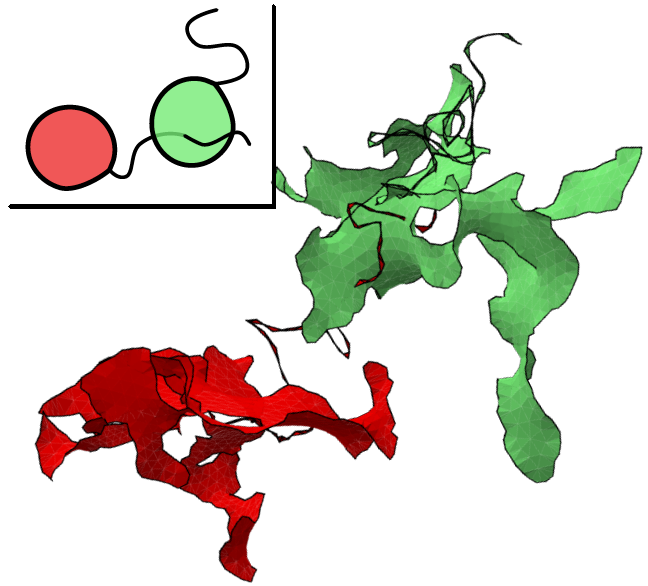Status:
Completed
Period
08-13 April 2019
Applicant
Dr. Jan Smrek
Home Institution
Faculty of Physics, University of Vienna, Boltzmanngasse 5, 1090 Vienna
Host Contact
Dr. Davide Michieletto
Host Institution
School of Physics and Astronomy, University of Edinburgh, James Clerk Maxwell Building Peter Guthrie Tait Road Edinburgh EH9 3FD (Edinburgh)
Aim of the mission
The purpose of the STSM was to initiate the interaction between two young career researchers in the EUTOPIA Network, who have been working on related topics in different research groups. The scientific aim was to combine the approaches developed by Davide Michieletto and Jan Smrek to quantify threadings between ring or tadpole-shaped polymers. These threadings have interesting and non-trivial consequences on the dynamics of the polymers but their precise characterisation remains elusive. Importantly, while experiments with tadpole-shaped polymers is now feasible, there is a lack of theoretical understanding of the observed dynamical properties. We hypothesised that the observed features could be explained via the concept of threadings. We verified this conjecture in simulations which we are now analysing with our different methods.
Summary of the Results
Based on the obtained statistics, we have identified strengths and weaknesses of the two techniques. While the minimal surface method (Jan’s) can overestimate the abundance of short threadings, it captures threadings with any number of surface crossings. The linking number method (Davide’s) is more computationally efficient, but it is prone to miss some of the threadings with even number of surface crossings. We found that while the two methods find some quantitative differences in the number of threadings, the qualitative behaviour is the same. The dynamics of un-threading events is similar across the two methods, i.e. it follows a stretched exponential with exponent close to 0.4-0.45. Both methods exhibit a power-law dependence of the distribution of the threading duration, however with different exponents (-1.8 and -1.5). We have determined a strategy to gain a better understanding of this dynamics. The minimal surface method allows for a more accurate quantification of the length of the threadings and we therefore plan to use this information to follow more closely the un-threading dynamics. We proposed effective one-dimensional model that has the potential to explain the observed quantitative differences and also to describe the threading dynamics in various other settings.
Dissemination
The STSM has resulted in a joint work that has been submitted for publication. D. Michieletto has been reporting on the interim results on the International Soft Matter Conference (ISMC2019) in Edinburgh, UK in June 2019 and the second EUTOPIA scientific meeting in November 2019.

